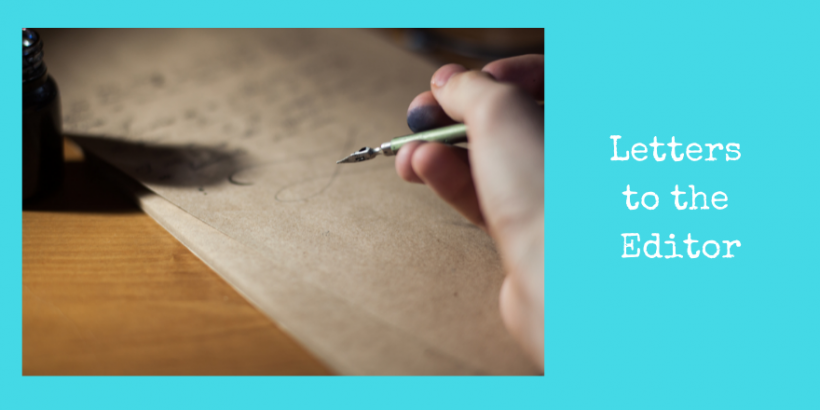Date: Sun, 17 Dec 2000 20:09:21 -0800)
From: George Winkel
Subject: Letter to the Editor – Chasing the Rainbow
I wish to smash the breeding kennels entrapping our humanity in mental “race”-boxes. To this end I have argued “race” is hypnotic mental categorizing, if not obsessive-compulsive hysteria; that it basically is a pseudo-science fraud perpetrated to induce arbitrary, basically psychological, divisions among us. Stretched like crime-scene police-tape, “race” partitions our affections for one another by mislabeling genetic biological inheritance. In other words, “race” divides us through rumors (“one-drop,” “miscegenation,” “evolution,” “I.Q.” …, etc.) — inculcating some indefinable dread — capable of making our blood run cold as those labeled, purple hemoglobin-bags hanging in medical refrigerators.
Although the “race” labels usually are physically descriptive, inasmuch as the well-learned “race” names reliably conjure stereotypes in the eyes of beholders, only rarely are such one-word descriptions honestly needed. Even then, the false paradox of arbitrary “race” — “difference” (i.e., “inequality”) being its root meaning — renders it impossible to describe anyone by “race” meaningfully. So, I argue “race” doesn’t exist.
But my purpose is not destruction of identities, necessarily. (“Colorblind” does not have a particularly appealing ring for me.) Rather, freedom from restraint by the implicitly mutually-exclusive “race-lines” is what I urge. What might such liberation be like? If we are accustomed to seeing “people our race” somehow looking “like us,” the world’s peoples included together, undivided by “race,” might seem a different world. What would we see if the screen of “race” were to drop from our eyes as if prison walls falling down into historical dust?
The 1950’s Disney movie, “The Secret Garden,” a 19th century childrens’ tale, depicted a lonely wheelchair-bound child heir in a somber mansion, on an estate. The first half of the movie was shot in black-and-white. Another child, brought in for a companion for the moody heir, discovered a key. The moment the key enabled the children to swing open a gate and enter a locked garden, the movie screen burst into Technicolor. This discovering a Technicolor world of flowers is one analogy envisioning, for me, the world free of “race.” That is, I think that paradoxically everyone’s racial “coloring” is more radiant without the eugenic shadows cast by “race.” (My experience, anyway.)
Marilyn Halter, researcher for the San Francisco Post, has invoked a rainbow with nicely pragmatic focus, I think, in her December 10, 2000, article: “Chasing the Rainbow,” “Now that marketers realize people come in other shades besides white, ethnic background is a sizzling commodity”
Notably, Halter observes America’s melting-pot, which traditionally pushed immigrants to “whiten” into European-Americans, now is seen chromatically widening the concept of “mainstream.” Halter’s article focuses on commerce’s discovery of this diversity. “Ethnic marketing is everywhere, and not just during the holidays — wheel your grocery cart along the supermarket aisles, and you’ll see that the international foods section has doubled in size. In America today, ethnicity is for sale year-round.”
Cautiously, Halter interrogates this trend, asking whether such bearding the “race” lion is a good idea? “Will shifting the focus from the melting pot to the individual ingredients that go into it help to correct historical imbalances or only serve to widen the chasms that separate us?” Or “Should we worry that all this attention to celebrating and targeting ethnic differences only creates greater divisiveness? Are we headed for a multicultural backlash,” she asks? “I don’t think so,” Halter confidently answers herself. “In fact, my research has made me less wary and quite optimistic about the future.” She finds “this is a much more complex story than “big business duping the consumer.” “Shoppers are not just being sold a bill of ethnic goods; they are shaping and demanding the marketplace to provide custom-made merchandise that speaks to their ethnic sensibilities. Crayola may be making more profits by manufacturing Multicultural Fleshtone Crayons, but parents of multiracial children are thrilled that their sons and daughters can draw human figures that look just like them.”
Related to this point, Halter tells us, “are the increasing number of marriages in this country that cross ethno-racial lines — not just black and white but Asian, Latino, Native American and others — which leads to rising numbers of children with multiracial identities. Once you have that level of structural assimilation, it becomes very, very difficult to turn back the clock.” Moreover “Companies are crossing historical social taboos and normalizing the lives of mixed-race couples by depicting their everyday activities in commercials: a Toshiba ad showing an interracial couple relaxing at home, an Asian American woman and a white man discussing which kind of laundry detergent they should use, a black woman and a white man flirting through a Nokia mobile phone.”
Finally, Halter writes, the form that this advertising-driven ethnic identification takes is only symbolic, mostly — not the sort of rationales or territorial claims that lead to ethnic wars. (Notable exceptions she mentions are Multicultural movements of indigenous peoples, such as Native Hawaiians.) “[I]t’s a kind of ‘ethnicity lite.’” Some may be concerned, Halter continued, that advertisers using ethnic motifs may be perpetuating stereotypes. (Can’t you just hear the Multicultural Left!) But Halter found that ethnic marketers and their promotions have become sophisticated and nuanced. “Among the everyday consumers from a broad range of racial and ethnic groups I interviewed for my research, this was never a complaint. For the most part, minorities who have for so long been left out of advertising imagery welcomed a glimpse of their own reflection on billboards and magazine covers.”
Are we seeing the early days of a demographic sea-change, analogous to the slowly swinging open of a locked gate to a secret world — as if a garden — peopled proudly with flowers, in full glory of their rainbow of variety?
George Winkel

